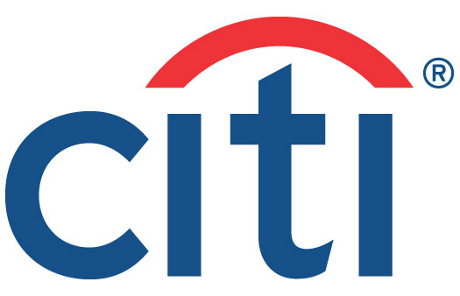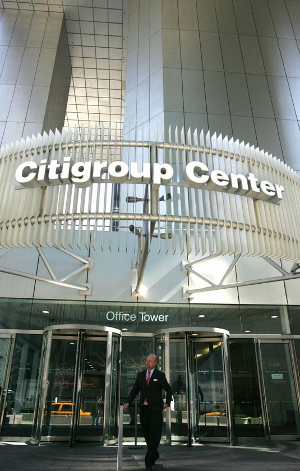History of Citigroup
Citigroup, the world’s ninth largest bank by market capitalization, and largest by revenue in 2008 is a global banking giant headquartered in New York City in the United States of America. Citigroup has departments covering almost every major and minor niche within the finance sector including retail, commercial, investment, credit cards, institutional, insurance and assurance, and other financial services. Citigroup currently owns the world’s largest financial services network and operates in over 100 nations around the globe.
Tracing the actual beginnings of Citigroup is made difficult due to the hundreds of companies that form part of the group although its oldest operating division was founded in 1812 by a group of investors in New York City with $2 million of startup capital under the name City Bank of New York. The bank started as a merchant bank offering clearing services and finance. In 1865 when the US national banking system was created, the renamed National City Bank of New York was one of the first banks to join the system and make a contribution to the Federal Reserve Bank of New York.

In a financial services group as large as Citigroup is there are many other operating divisions that joined through mergers or acquisitions, counting amongst them Saloman Brothers founded in 1910, Smith Barney founded in 1873, Schröder and Co founded 1818, Benemex founded 1884, Bank Hadlowy founded 1870, and European American Bank founded 1921. Other divisions claim antecedents going back to the 19th century but are no longer traded under the original brand.
Despite the impressive pedigree of established financial industry names behind it, Citigroup is a new corporation having been created from the merger of Citicorp and Travelers Group in one of the largest corporate mergers in history. April 7th 1998 saw the boards and shareholders of both companies agree to a merger to maximize opportunities across a broader range of specialist niches than either company was able to support alone.
The merger created a single banking and financial services giant with market capitalization of $140bn and combines total assets of $700bn, as well as a network of offices spanning 100 countries collectively supporting 100 million banking customers. Sandy Weill, chairman of Travelers and John Reed, the chairman of Citicorp became joint chairmen and CEOs of the new Citigroup corporation.
A potential stumbling block to the Citibank/Travelers merger, the Glass-Steagal Act of 1933 in the USA was dismissed by the board of Citigroup as an act that would soon be repealed. The act was originally enacted during the depression of the early 1930s to provide regulation of the banking industry, specifically it forbade commercial and investment banks from operating under common ownership which during the depression years had been identified as a source of conflict of interest and fraud. In 1999 the Glass-Steagal act was repealed by the Clinton administration clearing the way for Citigroup to continue its merger without divestment.

Starting 1999, Citigroup begins a process of consolidating its brand using the Citi prefix along with a division descriptor, Commercial Credit adopts the moniker CitiFinancial and all branches in the US and Canada are given a makeover. Also in 1999 Citigroup is one of the first, and certainly the largest banks to launch full Internet banking facilities to customers, an innovation that allowed Citibank branches to reorganize, reduce frontline staff, while at the same time increase personal services to customers who required it.
In 2000 Citigroup announces record revenues of $13bn, with every quarter up on market predictions. First half earnings were $6.6bn equating to $1.91 per share an increase of 28% on the previous years first six months. Year end revenue figures continued this trend leading to optimistic acquisitions including a takeover of Schroder and Co’s European investment banking business by Citigroup division Saloman Smith Barney and the takeover of Bank Handlowy w Warszawie SA of Poland. The following year Citigroup buys Mexico’s Banacci and merges their operations with Banamex, another Citigroup division.
Despite record revenue and large acquisitions Citigroup was not immune to the dot com market crash of 2002 having invested or loaned funds to several IT startups as well as bought shares in stock that subsequently lost all of its value. By the end of 2003 the repercussions had claimed Sandy Weill who stepped down as CEO but remained on the board until 2006.
Citigroups fortunes sadly haven’t improved with scandals affecting sharemarket confidence. In 2005 the Japanese Federal Services Authority ordered Citigroup’s private banking division to cease operations on the grounds they’d been offering services legally only permitted to be undertaken by securities companies. Whilst loss of earnings to Citigroup was only slight, it highlighted gross governance problems that soon appeared to be endemic within the corporation.
Around the same time Citygroup Global Markets, Chase Investment Services, and American Express Financial Services were collectively fined over $21million for violations of mutual fund sales by the National Association of Securities Dealers which had occurred in 2002/2003. The companies were found guilty of inadequately disclosing customer rights while selling Class B and Class C shares of mutual funds. In 2007 Citigroup were fined another $15million for using inaccurate sales materials in seminars about retirements savings plans with BellSouth employees.
In further scandals Citigroup were fined another $18million in refunds and fines after the California Attorney General accused Citigroup of theft against credit card customers by sweeping positive balances from accounts and placing the funds into a consolidated Citigroup account. An employee of Citigroup stumbled over the error and notified management, who ignored his report an continued to take funds not owed to them. Citigroup is one of the very few banks to face such relentless claims of poor governance and in some cases of theft, and the company’s share price has reflected the concern felt by the market.
In late 2008 Citigroup’s exposure to the sub-prime crisis in the US reached critical point and emergency government funding was required to avoid bankruptcy, a situation the US government believes would be catastrophic claiming that Citigroup is too big to fail. The market capitalization of Citigroup in late 2008 had fallen to just $6billion from highs in the hundreds of billions only a few years ago. In February 2009 the US government converted a $25billion loan into a 36% share in Citigroup and reached an agreement for a boardroom shakeup in its efforts to keep Citigroup afloat.
